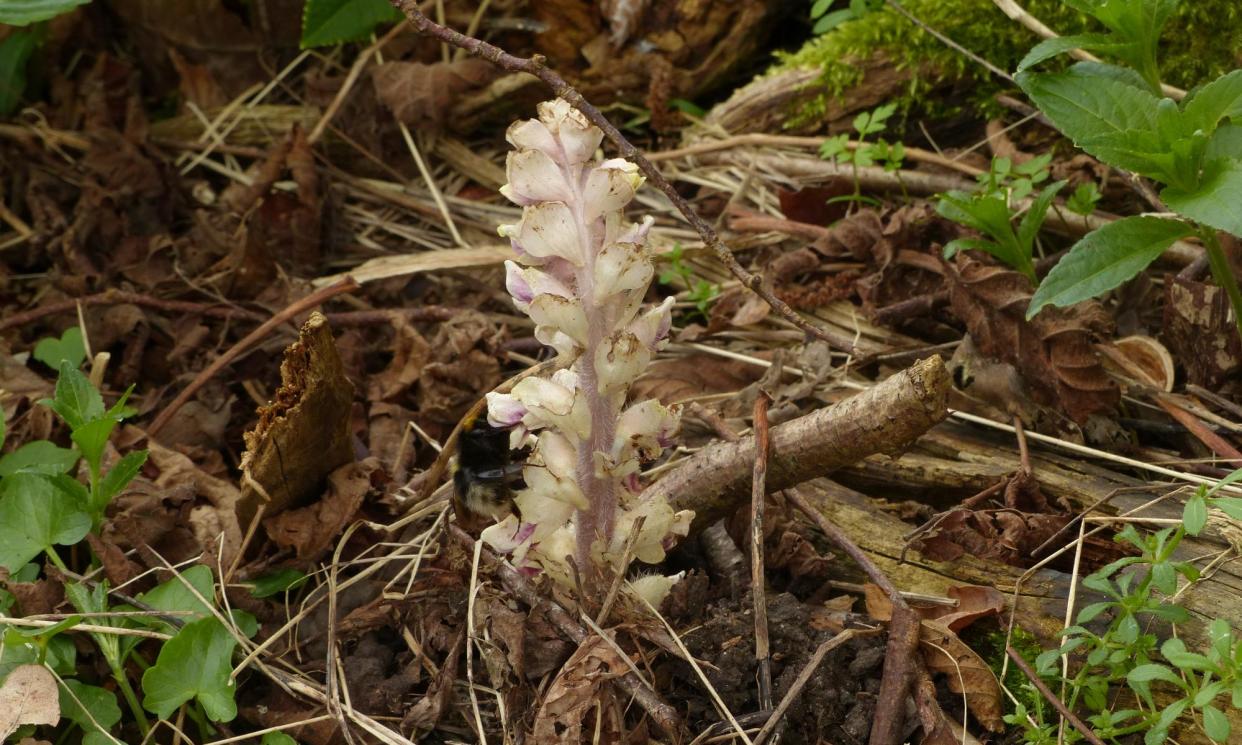Country diary: A covert congregation has gathered in the wood

Beneath a coppiced hazel on the edge of Wain Wood, a clandestine uprising has begun. Rows of knobbly scales thrust through the soil like skeletal beasts breaking free from their earthy bonds. Some have raised their heads, exposing dirty white flowers suspended from hairy pink stems.
These anaemic inflorescences belong to toothwort (Lathraea squamaria), also known as the corpse flower, supposedly on account of its deathly pallor. Its generic name comes from the Greek lathraios, meaning “hidden”, referring to toothwort’s largely subterranean existence. For most of the year, this holoparasite (a plant that lacks chlorophyll and is reliant on its host) lives beneath the ground, feeding from the roots of trees such as this hazel.
It seems fitting that these secretive plants grow in a place that was once a refuge for other underground communities. Deep in this ancient oak and hornbeam wood lies Bunyan’s Dell: a natural amphitheatre where the nonconformist preacher and author of The Pilgrim’s Progress, John Bunyan, led midnight services for hundreds of dissenters in the mid-17th century. Attending such meetings was illegal, so villagers kept watch on the nearby Tatmore Hills in case law officers should approach from Hitchin.
No one knows if toothwort was growing in Wain Wood in Bunyan’s day, but it was certainly present by 1838, when Henry Brown, a local Quaker and botanist, recorded the population. His herbarium, which includes the toothwort, is now in the Natural History Museum in London. Subsequent specimens were collected from the wood by naturalists between 1871 and 1948, and the colony is still thriving nearly 200 years later.
Three more toothwort spikes lurk in the lee of a mossy branch. They turn me into a lurker too, head down, bottom up, admiring the fleshy stems and milky calyx mouths from which two-lipped mauve corollas protrude. I watch a bumblebee – toothwort’s primary pollinator – visit each drooping spike in turn.
After pollination, toothy capsules develop inside, each filled with tiny seeds attached to oil-rich structures that attract ants, which then disperse the seeds. Then these unconventional plants will return to the underworld, all trace of their congregation gone – until next spring.
• Country diary is on Twitter at @gdncountrydiary


